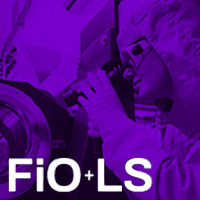Abstract
High-order harmonics of a Ti:sapphire laser are produced in the vacuum ultraviolet or soft x-ray spectral region to serve as the probe pulses or excitation pulses for valence shell and core level photoelectron spectra of transient and dissociating species [1]. Soft x-ray femtosecond pulses are generated by focusing intense 800 nm pulses into a rare gas pulsed jet of Ar or Ne, producing XUV photons at the odd harmonics of 800 nm with energies up to 100 eV. Photofragmentation dynamics of small molecules is initiated with visible or ultraviolet pulses from the same master laser system. Two types of time-resolved photoelectron spectroscopies, core level x-ray photoelectron (XPS) and valence band photoelectron (PES), probe between different potential surfaces of the molecules. Diatomic molecules, such as bromine, are excited to a repulsive dissociative state or a bound electronic state, and selected harmonics are used to obtain time-resolved photoelectron spectra. The resulting bromine atom radicals are detected as they are produced in real time, and these signals are related to the timescale for the free atomic species to be formed. The wave packet amplitude on the dissociative state is observed and related to the above threshold ionization processes in the molecule, which occur simultaneously. Relative ionization cross sections are determined as a function of probe wavelength. Other experiments emphasize dissociation and intramolecular processes in polyatomic molecule systems. A short-lived wave packet is observed by exciting He atoms near a resonance with a high harmonic, the quantum beats possibly resulting from collision-induced splitting of the states. Results are also presented for the production and characterization of the harmonics, including spectral bandwidth determinations, temporal resolution, and the use of the harmonics for stable-molecule and dissociating-state core level and valence shell photoelectron spectroscopy. High resolution studies of molecules and radicals are also performed at the Advanced Light Source synchrotron facility to provide baseline spectra. New investigations will involve the development of tools for the study of attosecond processes. The goal of this program is to develop a set of reliable, functional instrumentation for attosecond soft x-ray laser experimentation. It will enlarge upon the available experimental methodologies used to investigate attosecond time dynamical processes in gases, clusters, and solids.
© 2005 Optical Society of America
PDF ArticleMore Like This
Stephen R. Leone
JFF3 Conference on Lasers and Electro-Optics (CLEO:S&I) 2008
Stephen R. Leone
LTuA1 Laser Science (LS) 2007
Taro Sekikawa
CThA2G_01 Conference on Lasers and Electro-Optics/Pacific Rim (CLEO/PR) 2022

